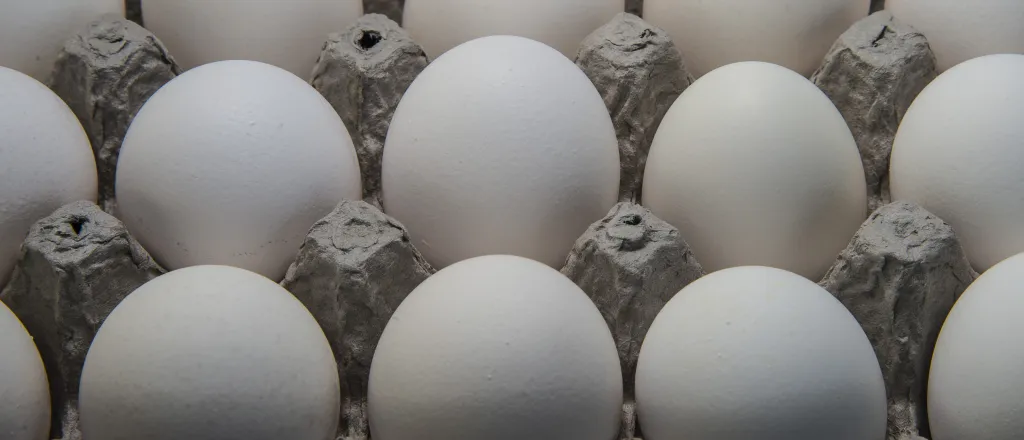
Those Easter eggs may be fun to decorate and nice to look at, but think twice before you eat those eggs. Gary Crawford has more.
PARTICIPANTS: Gary Crawford. Meredith Carothers with USDA's Meat and Poultry Hotline.
Note: The USDA's Meat and Poultry Hotline number is 888-MPHOTLINE(888-674-6854), or go online to Ask.usda.gov
Transcript
Okay, guys, you said you had the perfect song to kick off our story today on Easter eggs, right?
Yeah!
Okay, go for it!
Easter Bunny, we are Easter Bunny!
Hold it!
Stop!
I'm sorry, we're doing a story on eggs, not bunnies, so do you have an egg song?
Yeah!
Okay, go for it!
Easter Bunny, we are Easter Bunny!
No, no, never mind.
Thank you!
Yes, bunnies are bountiful this time of year, but for this report, it's eggs and egg safety.
We've got with us Meredith Carruthers, a food safety expert, dispenser of food safety knowledge at the U.S.
Department of Agriculture's Meat and Poultry Hotline.
So, Meredith, I thought we had a great egg song to kick off our story today, but alas, it didn't work out that way.
Oh, no!
Oh, yes, but we will doggedly forge ahead.
Yay!
Yay, okay.
Now, we know, Meredith, at the hotline around Thanksgiving, you get mostly calls about turkeys and that sort of thing, but at this time of year, what are most people asking about?
We're starting to delve more into the egg world.
The egg world, ooh.
And, of course, at this time of year, many families are planning on following that age-old tradition of coloring or decorating eggs, maybe having a little family Easter egg hunt, but you've got some words of caution about that if we intend to eat those eggs later on.
It's got to do with controlling bacteria that can be on or in those eggs.
So, first, Meredith, you want us to wash our hands before we start the coloring or dyeing process on those eggs.
Why is that?
Because eggs can technically have salmonella on the shell, not just inside the egg.
And it could end up on our hands when we're working with those eggs, or vice versa, already be on our hands and then be put back onto the eggs from us.
So, I guess we need to wash hands before and after decorating those eggs.
Yep, before and after.
Okay, so after cooking those eggs, you'd think, though, they'd be totally devoid of any harmful bacteria and that the shell would keep the bacteria out of the egg, but wrong.
You say it's still vulnerable to bacteria.
Why is that?
The shell itself is actually very porous.
Things can pass through it.
And you've told us before, bacteria can multiply to sickening levels within just a couple of hours at room temperature.
So, those eggs should go immediately into the fridge.
And if they have been out for more than a couple of hours, we should not try to eat those eggs.
Which brings us to, ah, yes, the traditional egg hunt.
What about that?
Oftentimes, you're putting them outside.
There's different bacteria and things that are present outdoors.
So, just not knowing what they potentially have touched or come in contact with, it's better just to not eat them.
Okay.
Does that help answer all your eggy questions?
Yes, that was excellent.
But if we do have more questions on any food safety subject, we can call the Meat and Poultry Hotline, 1-888-MP-HOTLINE.
1-888-MP-HOTLINE.
Or, for live chat, go online and go to ask.usda.gov.
Thanks again, Meredith.
You're very welcome.
I hope you have a great day.
I'll go out of my way to have it.
Ah, wonderful.
Okay, this is...
Oh, no, no, not again.
No.
This is Gary Crawford reporting for the U.S. Department of Agriculture.
Blimey!
[LAUGHTER]








